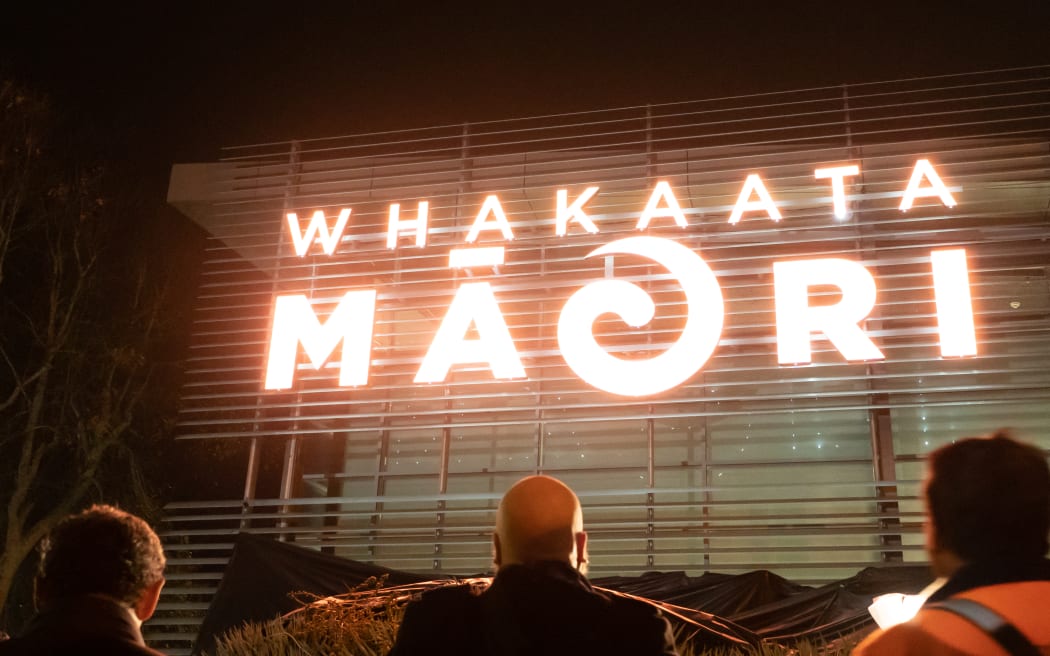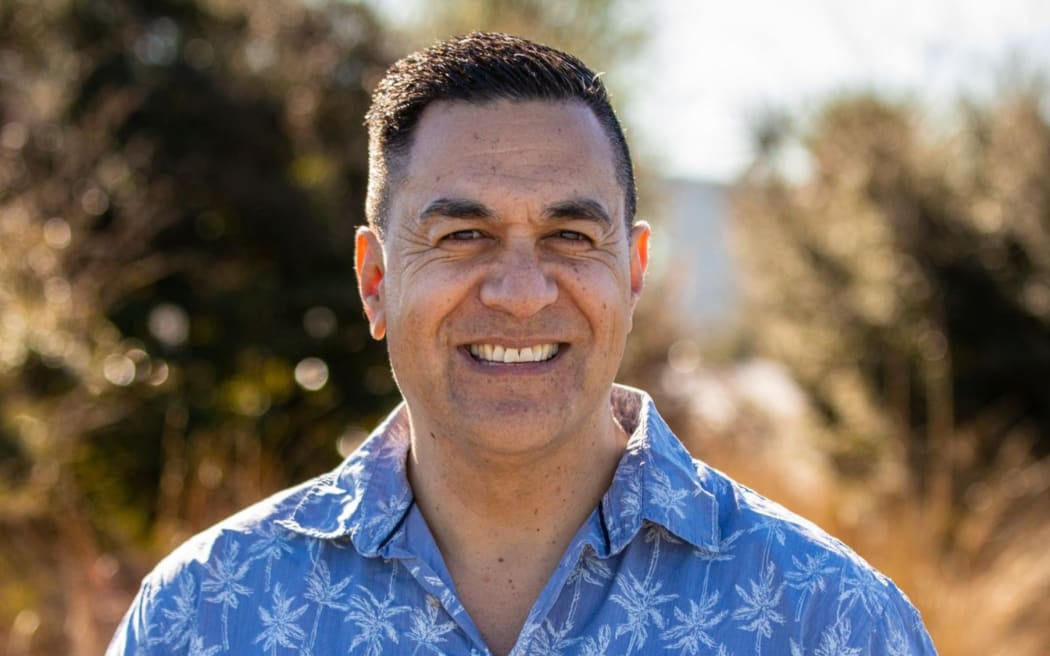
Whakaata Māori is celebrating its 20th birthday. Photo:
Thursday marks 20 years of operations for Whakaata Māori, formerly Māori Television.
On 28 March 2004, Māori TV went live - broadcasting its own opening dawn ceremony at the station's new offices in Newmarket, Auckland.
Government ministers, iwi representatives and stakeholders were on full display as well as the hundreds of people who lined the street to get a peak of the new kid on the block.
The station's orange korū was displayed for the first time along with its then-tagline: "mā rātou, mā mātou, mā kotutou, mā tātou" or "for them, for us, for you all, for us all".
The pōwhiri broadcast was headed by now veteran broadcaster Julian Wilcox and Rongomaianiwaniwa Milroy, who opened with a mihi in both te reo Māori and English.
This broadcast marked the beginning of the country's only unashamedly Māori television channel.
It spawned well-loved programmes like hit karaoke show Homai Te Pakipaki, Code, Marae DIY and hard-hitting current affairs programming like Native Affairs and Te Kāea, now Te Ao Māori news.
Its purpose was to put te reo Māori and tikanga Māori on a pedestal, roping in both Māori and non-Māori viewers with programming focused on te reo Māori and Māori perspectives, as well as regularly showing foreign films and documentaries.
Along the way a spin-off channel, Te Reo, was created featuring full reo Māori programming.
The Māori Television Service was not, however, the first attempt at establishing a kaupapa Māori television channel.
The ill-fated Aotearoa Television Network began broadcasting in 1996, eight years before Māori TV. It was shut down only a year later because of insufficient funding.
Wilcox said there was anxiety at the time that Māori TV might share the same fate.
"Because of the controversy surrounding [it] at the time people were really sceptical about the idea of a Māori television service," he said.
The development of a Māori television service had its roots in the protest movements of the 1970s and 1980s, he said.
"It's a symbol of Māori protest for the reinvigoration, for the normalisation of te reo Māori which traces its way back to [the] Māori language petition, and particularly the Māori language protest movement."
The idea of a fully fledged TV station began to gain momentum with the election of the Labour government in 1999.
"The Minister of Māori Affairs at that time was Parekura Horomia. There was an establishment trust, Te Awhioraki Trust. They set up a board, chaired by Derek Fox, and then all hell broke loose." Wilcox said.
Canadian John Davy was appointed chief executive of Māori Television in 2002 - but was fired less than six weeks later after it was discovered he had lied about qualifications on his resume.
He was found guilty of falsifying qualifications and sentenced to eight months in prison
Despite the station's scrappy start, Wilcox said there was huge talent on offer right from the beginning.
"Everyone who had a job was basically thrown into doing lots of different things. If you're a cameraman [you] got trained to be an editor, if you're in sound you pick up a camera. Sometimes you'd be thrown in as talent, sometimes you'd get asked to be a part-time reporter," he said.
"We did what we could, and the reason is this. At the time Māori Television started there was lots of negativities, just the idea of having a Māori service. The opposition party at the time was National and Don Brash, the leader, basically said that if they got into government, they'd give all the money allocated to Māori TV and put it into books for Māori kids who can't read in school.
"Everyone felt like we have to do as much as we could to prove that it could survive and thrive. That's the vibe that kept us going every day.
"We did as much as we could to make Māori Television the indelible mark of Māori broadcasting, not just in 2004, but for years to come."

Everyone did as much as they could to help the channel "survive and thrive", Julian Wilcox says. Photo: Julian Wilcox
Māori media advocate Professor Ella Henry also remembered those early days fondly. Henry hosted Ask Your Auntie, one of the station's most popular shows when it ran between 2004-2007.
The show centred on a rotating panel of guests, all wāhine Māori, answering questions sent in by viewers.
Panellists included TV and film personalities like Mabel Wharekawa-Burt, Aroha Hathaway, Vanessa Rare, Veeshayne Patuwai, Kath Akuhata-Brown, Christina Asher, Whetu Fala, Ngawai Herewini and Rachel House.
Henry said Māori TV was the only broadcaster with the guts to put bold wāhine on screen.
"Māori Television embraced it. It was and continues to be the only television show that has ever allowed wāhine Māori to be bold and brave and sassy and sexy. It's quite an achievement." she said.
Whakaata Māori, she said, was not a state broadcaster or some great idea made up by the Minister of Broadcasting - it was a treaty settlement.
"It was an incredibly exciting time and remains so for the revitalisation of te reo Māori, for the telling of Māori stories through a Māori lens, for providing opportunities for Māori storytellers.
"The political environment that Māori Television has emerged from has been continually fraught. Successive governments, not just since 2004, that have wanted to control it. We still have a Crown that has trouble being a good partner."
Henry said Whakaata Māori had survived the last 20 years by sticking true to its kaupapa.
"It does that despite the fact it faces diminishing investment through the Crown, and we are currently in an environment where we need to be very careful that the Crown continues to respect the partnership and continues to invest successfully."
Speaking to RNZ's Māpuna programme, Whakaata Māori kaihautu/chief executive Shane Taurima said the landscape of Aotearoa's media sector brought new challenges for the media organisation.
"While we rely primarily on government funding, there is a big question over that at the moment in terms of what that may look like going forward. There is just over $50 million at risk of being lost from the sector over the next three years - time-locked funding that was given by previous government to support Māori language media."
Taurima said he was concerned at the prospect of losing that funding.

Whakaata Māori kaihautu Shane Taurima. Photo: Te Ao Māori News
Whakaata Māori did not receive any new funding from 2008 to 2022, he said.
"We've still continued to do the mahi and do things well, I must say."
Taurima said he was pleased to hear Māori Development Minister Tama Potaka was committed to working with the broadcaster through those challenges.
"A lot of work has been done to interrogate the sector and understand what the challenges are."
Becoming a digital-first organisation was key to addressing those challenges, he says
"Māori Television was developed when Facebook was just becoming a thing. Social media wasn't a thing, digital wasn't really a thing. Now we live in digital.
"Our demographics are moving faster than anyone else to digital platforms [and] 144,000 people get Māori content from our Māori+ app every day. That's significant."


